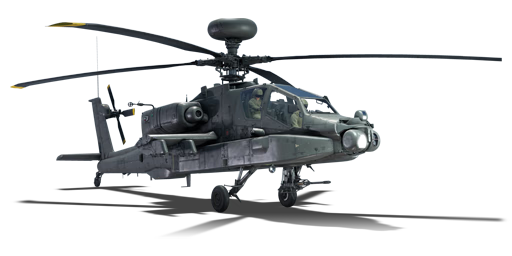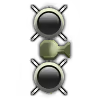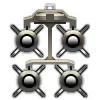



Following studies done in the late 1980s on the AH-64A Apache, and funding in 1991, the US Army began to look at upgrading their existing fleet of aircraft. Special attention was focused on equipping the helicopter with the AN/APG-78 Longbow radar from Northrop Grumman, which would allow the helicopter to operate even in bad weather conditions and over water, and also simplified the targeting of weapons. In 1992, McDonnell Douglas presented four prototype helicopters with a new radar mounted above the rotor hub, and by 1995, mass production of the helicopter began under the designation AH-64D Apache Longbow. In addition to the radar, the helicopter also received improved General Electric T700-GE-701C engines, updated electronics, avionics, and the ability to carry the latest weapons. Subsequently, all AH-64As of the US Army were converted into the AH-64D version, and in total more than 1,000 helicopters of this version were built, which are also actively sold for export.
Introduced in Update 1.97 "Viking Fury", the AH-64D retains the good flight characteristics of its predecessor, but also features new systems, including the more powerful AGM-114K Hellfire II missiles and a MAW system which can automatically deploy countermeasures when an incoming missile launch is detected. However, the main and most distinctive feature of the new variant is the radar, which is capable of detecting and tracking both air and ground targets.
| Belt | Belt filling | Armor penetration (mm) at a distance: | |||||
|---|---|---|---|---|---|---|---|
| 10 m | 100 m | 500 m | 1000 m | 1500 m | 2000 m | ||
| HEDP | 51 | 51 | 51 | 51 | 51 | 51 | |
| Name | Weight | Slot | ||||||
|---|---|---|---|---|---|---|---|---|
| 4 × | 40.4 kg |  |  | |||||
| 60 × Сountermeasures | 5.4 kg |  |  | |||||
| 19 × | 231.6 kg |  |  |  |  | |||
| 7 × | 144.6 kg |  |  |  |  | |||
| 7 × | 160.5 kg |  |  |  |  | |||
| 2 × | 128.3 kg |  |  |  |  | |||
| 4 × | 198.5 kg |  |  |  |  | |||












Flight performance |
|---|
Survivability |
|---|
Weaponry | ||
|---|---|---|